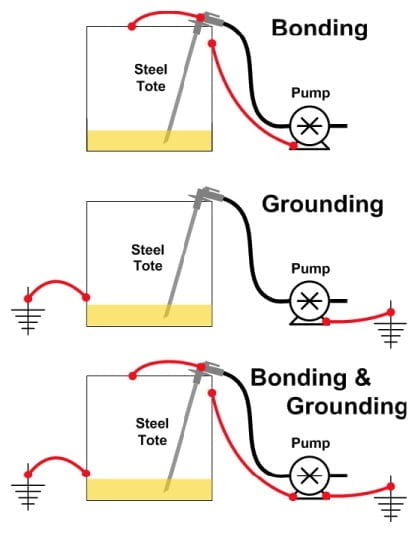Static electricity is a fact of nature. It has been and will always be a concern to everyone, everywhere. Whether at work or play we all have experienced static electricity in one form or another. Shuffle your feet across the carpet on a cool, dry day and touch something or someone – you’ll get a static shock.
Watch a thunderstorm and witness nature’s power in the form of lightning another example of static electricity. What is static electricity? Electricity is simply the flow of free electrons. Each electron is a part of atom, which is the basic makeup of all matter. Matter is everything in the universe.
When these electrons build up in unequal amounts on two different objects, and when the buildup becomes large enough, electricity flows in the form of static discharge or a spark. The static charge on one object can transfer to another in two ways – conduction or induction. The difference is that in conduction, the objects have to be touching in order for the charges transfer. In induction, the objects do not have to be touching. A charge on one object will transfer electrons to non-charged object until there is a balance of charges on both items. This balance is known as equilibrium. since everything is matter, charges build up on everything (gases, dust particles, liquids, pipes, machinery and people.)
To avoid explosion in the workplace, injury to employees and destruction to equipment, static buildup must be discharged to a non-charged object. This return to equilibrium can be safely achieved in two ways –Bonding and Grounding.

Bonding
Bonding is the procedure of electrically connecting two objects so they are at the same electrical potential, or equilibrium. It is accomplish by the use of a bonding wire connecting two objects. The same effect can be achieve by direct contact between the two objects as long as paint or other coating does not interrupt the contact. Bonded objects are also connected to ground, so static charges can be completely dissipated. Always keep containers closed until after bonding has taken place. When you are finish, close containers before disconnecting the bonding wire.
Grounding
Grounding is the procedure of connecting an object to an electrical ground or earth potential. It provides electrical path into the earth, or to any large metal structure of a bonding that allow the charges to dissipate. Grounding is the surest method of controlling static charges!



Please let me know if you’re looking for a writer for your weblog. You have some really great articles and I believe I would be a good asset. If you ever want to take some of the load off, I’d really like to write some articles for your blog in exchange for a link back to mine. Please shoot me an email if interested. Many thanks!